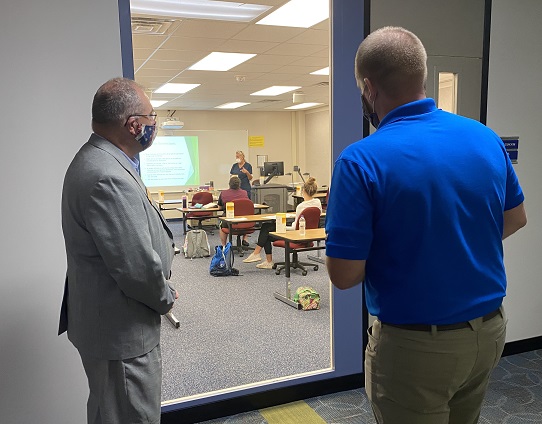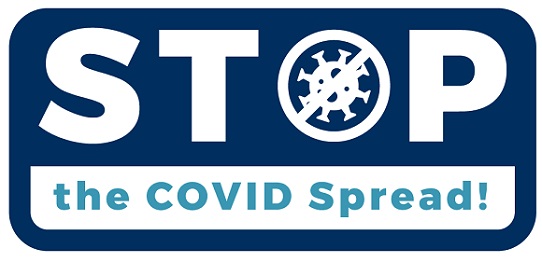

Our state's election system is intended to be robust and transparent. Everyone should have confidence that (1) it works, and (2) if any wrongdoing occurs or any rules are broken, that this is discovered and that justice is done. Walk with me for a moment through the steps in our state's vote tallying procedures; I hope I can help separate some facts from half-truths from fiction.
The first step occurs at the end of Election Day and continues for as many hours as it takes, sometimes well into that night. In-person voting ends at 8 pm; if you're waiting in line at that time, you still get to vote. Absentee ballots that have arrived by 8 pm also count; state law does not permit the poll workers to stop working until all valid ballots have been fed into the counting machines. When this work is complete, the poll workers convene a public meeting (where the general public and the media are welcome). The voting equipment prints a results tape, which is read aloud; the public may also view, copy and/or photograph it. The poll workers seal the ballot bags and complete chain-of-custody paperwork and provide everything to the municipal clerk. The clerk must report these unofficial results to the county clerk within two hours, and the county clerk must post these same unofficial results within two more hours. In large cities such as Milwaukee, this initial work can take all night; as you may be aware, in accordance with this procedure, Milwaukee posted a large batch of unofficial results in the early hours of Wednesday, November 4.
The second step begins almost immediately thereafter and extends through November 17; this is the more thorough official count, or "canvass." Every local municipality has to certify to its county clerk that, for instance, the number of ballots issued equals the number of people indicated in the poll book equals the number of ballots that were counted. It's a routine but intensive process, and it routinely discovers clerical errors (for instance, typos in the unofficial count) and helps detect and prevent some kinds of fraud such as double voting. Like the unofficial counting, the official canvass is a public process; and, because elected county clerks are partisans, it is required that at least one member of each county board of canvassers be a member of a different political party. As of today, 64 of our 72 counties have completed this step; a few errors have been caught and corrected; and the official count so far has been slightly but insignificantly adjusted.
When all 72 counties have finished Step 2, if a candidate (such as President Trump) is trailing by less than one percentage point in the official tally, the candidate may request a statewide recount. If a recount occurs, it will be more intensive yet than the official canvass has been; this would involve opening all the sealed bags of ballots and physically counting them again, as if it were Election Day all over again. There would be new opportunities for public, partisan and media scrutiny.
Whether or not a recount occurs, the third step then begins. State Elections Commission staff re-tally all 72 counties' official results. The Elections Commission will also conduct random audits of 5 percent (more than 180 wards statewide) of the voting equipment; if a municipal clerk gets chosen for a random audit, that clerk has to hand-count all the paper ballots (twice!) to confirm that the totals match the totals that the machines produced. These audits are again public; in 2018, the Elections Commission unanimously voted to wait to certify the final election results until every one of these routine, random audits was complete.
When all the routine audits are complete, and after a possible recount is complete, and no later than December 1, the state Elections Commission chair (not the state legislature) certifies the official statewide results. At this point, if a candidate believes he/she has been wronged (i.e., if there are allegations of fraudulent voting, or if rules about transparency have been violated, or if there is a dispute as to which ballots were valid, or any number of other possible grievances), the candidate may sue in court to challenge the official statewide tally. It would be the court system's job to evaluate the evidence, determine whether harm has occurred and decide any appropriate remedy.
When any legal dust has settled and the official statewide count is final, the official results are presented by the Elections Commission to the Governor (not to the state legislature). The Governor prepares a "Certificate of Ascertainment" that names which president and vice president candidate was the winner; names the electors (the humans chosen by the winning candidate's party to physically cast Wisconsin's votes in the Electoral College); and to which is affixed the Great Seal of the State of Wisconsin. This certificate is sent to the U.S. General Services Administrator as the final report of our state's presidential election. In Wisconsin, the electors who attend the Electoral College are required by state law to cast their ballots for the candidate who won our state's popular vote; they are not allowed to vote for a different candidate. The state legislature has no role in selecting who the electors are or for which candidate they will vote.
This is a robust process. It is among the safest in the nation, thanks in large part to our voter ID law. But it is not perfect; it is not necessarily tamper-proof; and even though the legislature has no direct role in taking the steps named above, it is absolutely our duty to constantly maintain and seek to improve the process. Therefore, as the process continues to run its rightful course, my colleagues on the Assembly Committee on Campaigns and Elections intend to use their investigatory powers to document how the recent election was administered.
If there were irregularities, let's find them and explain them and, if need be, hold people accountable. If proper procedures weren't followed, let's discover why not and learn whether this was impactful. If there are ideas for improving efficiency, increasing transparency or building the public's trust in the system, let's identify them. And, if our scrutiny reveals that our system worked well, let's document that too and shine a well-deserved spotlight on the people who did their jobs faithfully.
Everyone should be able to agree that the vote was fair and the results legitimate. All the efforts that I've described contribute toward that goal.

#stopthespread

This week, Governor Evers took to the airwaves to urge our entire state to take sensible precautions to combat the coronavirus. In his address, he expressed that beating the virus is going to depend on individual responsibility; in this, he and I agree. I spoke this week with several chiefs of our local hospitals, who confirmed that they are maxed out; that ICU beds are in short supply; and that their workforce is stretched to the limit. I join the large chorus of business, healthcare and advocacy leaders in asking you to do your part in turning the corner: to the extent that you are able, please wear a mask, socially distance, wash your hands often and stay tuned to the latest recommendations from the health experts. Learn more at www.wha.org/stopthecovidspread.
Sheboygan County has been a statewide leader all year long in presenting reliable data and making resources available for confronting the outbreak. Click here to access our county's one-stop shop for information.
Office of Representative Terry Katsma
State Capitol, Room 306 East
P.O. Box 8952
Madison, WI 53708
(608) 266-0656
Rep.Katsma@legis.wisconsin.gov| |
|